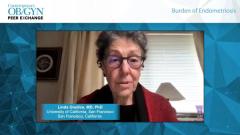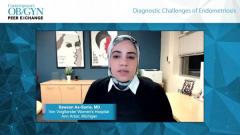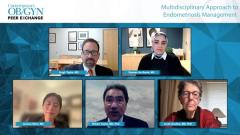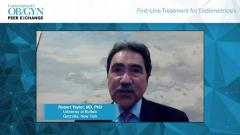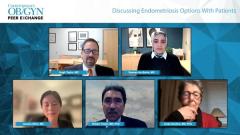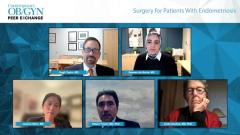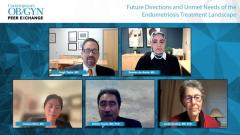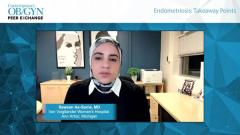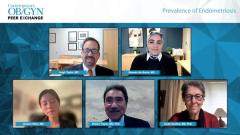
Prevalence of Endometriosis
Hugh Taylor, MD, leads a discussion with a panel of experts about the prevalence of endometriosis.
Episodes in this series

Hugh Taylor, MD: Hello, and welcome to this Contemporary OB/GYN® Peer Exchange titled “Expert Perspectives on Endometriosis Management.” I’m Dr Hugh Taylor, the Anita O’Keeffe Young Professor and the chair of the department of obstetrics, gynecology, and reproductive sciences at Yale School of Medicine and the chief of OB-GYN [obstetrics-gynecology] at Yale–New Haven Hospital [in New Haven, Connecticut]. I’m joined by a panel of endometriosis experts. I’m very fortunate to have 4 colleagues joining me. I’ll let them introduce themselves. Let’s start with Dr As-Sanie.
Sawsan As-Sanie, MD: Hi, my name is Dr Sawsan As-Sanie. I’m an associate professor and the director of the minimally invasivegynecologic program and the endometriosis clinic at the University of Michigan [in Ann Arbor, Michigan]. It’s my pleasure to be here.
Hugh Taylor, MD: Dr Shim?
Jessica Shim, MD: Hi, everyone. My name is Jessica, and I’m 1 of the attending doctors in the division of gynecology in the department of surgery at Boston Children’s Hospital. I’m also an instructor at Harvard Medical School in Boston, Massachusetts.
Hugh Taylor, MD: And the other Dr Taylor?
Robert Taylor, MD, PhD: Hello, my name is Rob Taylor. I’m a professor of obstetrics and gynecology at the University at Buffalo Jacobs School of Medicine [and Biomedical Sciences] [in Buffalo, New York]. It’s a pleasure to be here.
Hugh Taylor, MD: Dr Giudice?
Linda Giudice, MD, PhD: Hi, I’m Linda Giudice. I’m a distinguished professor of OB/GYN and reproductive sciences at the University of California San Francisco [UCSF] and a codirector of the UCSF-Stanford Endometriosis Center for Discovery, Innovation, Training, and Community Engagement [in San Francisco, California].
Hugh Taylor, MD: Welcome, everyone. In today’s discussion, we’ll share our thoughts on the management of patients suffering from endometriosis and discuss some of the treatment options for this disease. Let’s jump right in. First, let’s start by talking about how common this disease is. Dr Giudice, would you like to talk about the prevalence of this disease?
Linda Giudice, MD, PhD: Endometriosis is very hard to determine. There have been several studies looking at ICD [International Classification of Diseases]–10 codes and other ways of assessing prevalence. The numbers vary from about 3% to 10% of reproductive-age women and 30% to 50% of those who have it are women who have infertility or chronic pelvic pain. It’s pretty common.
Hugh Taylor, MD: It’s pretty common, but I wonder if some of it goes undiagnosed and is never recognized. Could it be even more common than we suspect?
Linda Giudice, MD, PhD: I think so. Given that, at least historically, the gold standard has been diagnosis by surgery, it seems that those who don’t have access to surgery or may not be able to have surgery for diagnosis for various reasons may go undiagnosed.
Robert Taylor, MD, PhD: It’s interesting to me that some of the more recent data suggest a slightly lower prevalence. If we look at the SART [Society for Assisted Reproductive Technology] database, which is more recent than a lot of the reports, those numbers have decreased. In a recent study from the group at the University of Washington using Kaiser Permanente data, well over 1.5 million women showed up with a lower prevalence than we thought in the past. I’m curious as to what you all think might be causing that to happen. Maybe we’re being more specific about identifying pelvic pain and not necessarily calling it endometriosis, but it’s curious to me that that number has been shrinking rather than increasing over the past couple of decades.
Hugh Taylor, MD: I don’t know. Sawsan, I’ve always thought of the diagnosis of this menorrhea as endometriosis, but you treat a lot of women with pelvic pain. What do you think of this? Is it really shrinking, or are we labeling it something else?
Sawsan As-Sanie, MD: These are all excellent points but contrasting points as well. Linda brings up an important point, that access to care is such an important driving factor in getting the diagnosis. Not just having medical care but having medical care by a physician who’s aware of this disease and is trained to make the diagnosis. That also speaks to the potential disparities in diagnosis based on socioeconomic status, race, ethnicity, and access to care. You need to be able to see a physician who includes it as part of the differential diagnosis. If they have other diseases that they think are more likely in a given patient, they might not fully explore this as a diagnosis.
On the flip side, you’re exactly right, endometriosis is a disease that has pelvic pain as 1 of its most common symptoms. It has a variety of pain symptoms, including painful periods, but those symptoms can occur because of a variety of other causes, which might not always be endometriosis. Because we don’t have a noninvasive way to diagnose it definitively, there’s going to be a continued potential discrepancy between symptoms, access to care, and the diagnosis. But all these areas need more investigation and more resources.
Hugh Taylor, MD: Absolutely. Jessica, you work at a children’s hospital. How about the age distribution? Are we seeing it more in younger women and adolescents? Is it getting recognized earlier? What age distribution of endometriosis is there?
TRANSCRIPT EDITED FOR CLARITY
Newsletter
Get the latest clinical updates, case studies, and expert commentary in obstetric and gynecologic care. Sign up now to stay informed.



